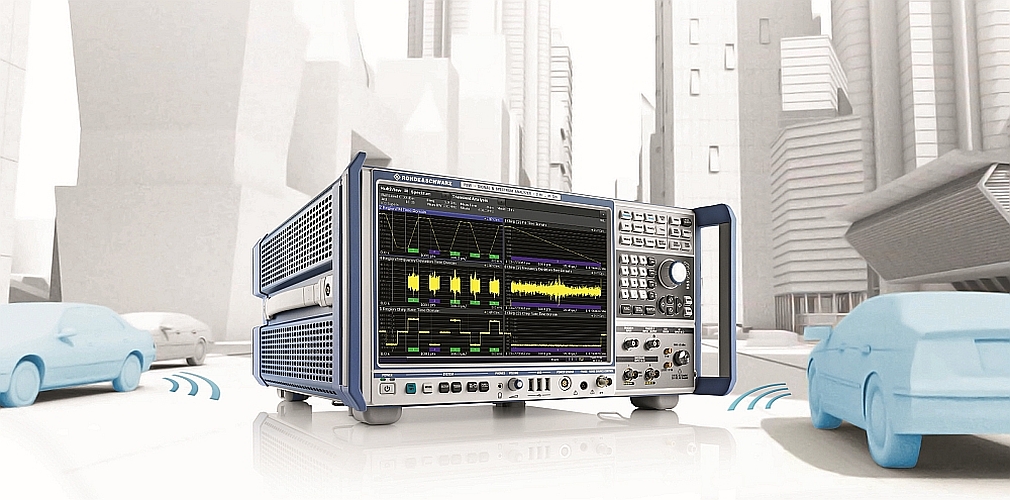- Rohde & Schwarz announces the R&S FSW-B8001 option for its R&S FSW family of signal and spectrum analyzers.
- With this option, the high-performance signal and spectrum analyzer of the R&S FSW series now has an internal analysis bandwidth of 8.3 GHz.
With the new R&S FSW-B8001 option, which extends its internal analysis bandwidth to 8.3 GHz, the R&S FSW signal and spectrum analyzer meets, according to Rohde & Schwarz, current and future test and measurement requirements for the analysis of ultra-wideband signals in various industries.
For example, the R&S FSW analyzer is suitable for measuring pulses from radar systems used in the aerospace and defence industries, for testing satellite payloads and for pre-distortion testing of amplifiers. It can also be used for the analysis of automotive radar pulses and in research areas concerning next-generation wireless communications.
The signal bandwidth tends to increase in virtually all applications involving high-frequency signals. For example, in radar applications, larger bandwidths allow for improved range resolution for object detection. In the development and validation of radar systems and radar jammers, a wider bandwidth allows detailed analysis of frequency hopping of different radar systems operating at different frequencies.
Increasing bandwidths have also become necessary for wireless communication technologies for the transmission of data at ever higher data rates. For example, the IEEE 802.11ay standard for Wi-Fi implements, via channel bonding, signals with a bandwidth greater than 8 GHz. Appropriate wideband instruments are also required for testing gigabit transmission equipment operating at sub-THz frequencies, such as D-band and G-band, which are often referred to as potential frequency ranges for the future sixth-generation (6G) wireless communication standard.
Future satellite systems will also exploit higher frequency signals and greater bandwidths. For satellites carrying high-speed terabit transmissions, bandwidths are expected to increase from 3 GHz or 5 GHz to frequencies up to 90 GHz.
Rohde & Schwarz points out that signal analysis of these ultra-wideband systems has so far generally only been possible by workaround means. One method has been to use a spectrum and signal analyser as a wideband downconverters. The converted signals were sent to an oscilloscope, which digitised them before sending them back to the analyser. The new option offered by the R&S FSW analyzer provides an alternative, ergonomic solution that is integrated into a single instrument providing all signal and spectrum analysis functions.






